
The black-browed albatross, also known as the black-browed mollymawk, is a large seabird of the albatross family Diomedeidae; it is the most widespread and common member of its family.
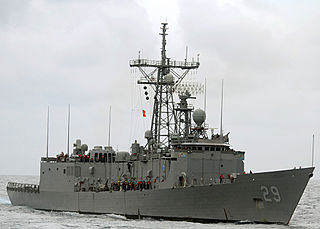
USS Stephen W. Groves (FFG-29), twenty-first ship of the Oliver Hazard Perry-class of guided missile frigates, was named for Ensign Stephen W. Groves (1917–1942), a naval aviator who was posthumously awarded the Navy Cross for his heroism at the Battle of Midway during World War II.
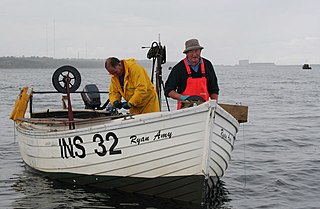
Longline fishing, or longlining, is a commercial fishing technique. It uses a long line, called the main line, with baited hooks attached at intervals by means of branch lines called snoods. A snood is a short length of line, attached to the main line using a clip or swivel, with the hook at the other end. Longlines are classified mainly by where they are placed in the water column. This can be at the surface or at the bottom. Lines can also be set by means of an anchor, or left to drift. Hundreds or even thousands of baited hooks can hang from a single line. Longliners – fishing vessels rigged for longlining – commonly target swordfish, tuna, halibut, sablefish and many other species.

USCGC Douglas Munro (WHEC-724) is a High Endurance Cutter of the United States Coast Guard, named for Signalman First Class Douglas A. Munro (1919–1942), the only Coast Guardsman to be awarded the Medal of Honor. The vessel is currently commanded by Kevin W. Riddle, and as of September 2, 2018 is stationed in Kodiak, Alaska.
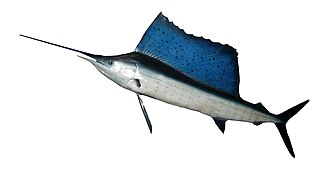
The Indo-Pacific sailfish is a sailfish native to the Atlantic, Indian and Pacific Oceans. It has entered the Mediterranean Sea via the Suez Canal as a Lessepsian migrant. It is dark blue on top, brown-blue laterally, silvery white underbelly; upper jaw elongated in the form of a spear; first dorsal fin greatly enlarged in the form of a sail, with many black cones, its front squared off, highest at its midpoint; pelvic fins very narrow, reaching almost to the anus; body covered with embedded scales, blunt at end; lateral line curved above pectoral fin, then straight to base of tail. They have a large and sharp bill, which they use for hunting. They feed on tuna and mackerel, some of the fastest fish in the Ocean. Some authorities only recognise a single species of sailfish, I. platyperus.

Conche is a community on the Northern Peninsula of Newfoundland and Labrador, Canada. Its population in 2016 was 170.
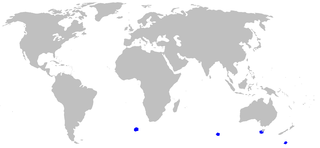
The whitetail dogfish is a very rare sleeper shark of the family Somniosidae, found from the eastern Indian Ocean round southern Australia to New Zealand, at depths of between 150 and 500 m. Its length is up to 1.1 m.
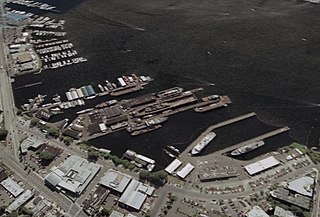
Lake Union Drydock Company is a full-service shipyard that specializes in vessel repair and conversions located in Seattle, Washington. Drydocking vessels up to 6000 tons, Lake Union Drydock Company repairs factory trawlers, fishing vessels, Coast Guard Cutters and buoy tenders, tugboats, research vessels, ferries, mega-yachts, barges, and houseboats.
Sunwell Technologies registered the world's first slurry ice patent application in the U.S.A. in 1976. Sunwell pioneered and continued to develop the field of slurry ice and is today the world leader in slurry ice systems, with numerous patents worldwide covering various processes for the production, storage and distribution of slurry ice.

Bay de Verde is an incorporated town in Conception Bay on the northern tip of the Bay de Verde Peninsula of Newfoundland and Labrador, Canada. The first recorded inhabitants at Bay de Verde arrived in 1662. Bay de Verde became an incorporated town in 1950.

A fishing vessel is a boat or ship used to catch fish in the sea, or on a lake or river. Many different kinds of vessels are used in commercial, artisanal and recreational fishing.

Admirals Beach is a rural community located in Newfoundland and Labrador, Canada.
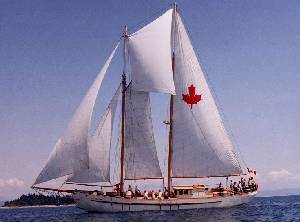
The Maple Leaf is a schooner built in 1904, making it British Columbia's oldest tall ship. In 1906, the Maple Leaf was the only Canadian vessel to qualify for the first ever Trans-Pac sailing race, which was slated to take place in San Francisco but never took place due to the massive earthquake that occurred in that year. From the 1930s to the 1970s, the Maple Leaf was a halibut longliner on the Bering Sea, making it one of the longest-running ships to fish.

A factory ship, also known as a fish processing vessel, is a large ocean-going vessel with extensive on-board facilities for processing and freezing caught fish or whales. Modern factory ships are automated and enlarged versions of the earlier whalers and their use for fishing has grown dramatically. Some factory ships are equipped to serve as a mother ship.
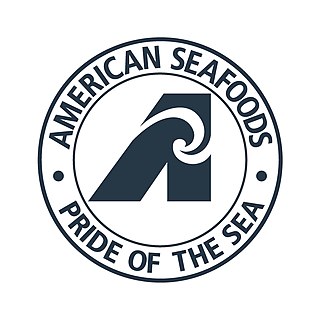
American Seafoods Company is one of the largest seafood companies in North America and one of the largest harvesters of fish in the world. Based in Seattle, Washington, ASC owns and operates six large catcher-processor vessels that harvest and process on board fish caught in the U.S. waters of Alaska and the Pacific Northwest. The company is well known for its products made from Alaska pollock, Pacific (whiting) hake, Yellowfin sole, and Pacific cod. These products are sold throughout North & South America, Asia and Europe. American Seafoods Company is the largest harvester in the U.S. Bering Sea Alaska Pollock fishery with approximately 45% of the catcher-processor market share.
Canada's 2008 annual commercial seal hunt in the Gulf of St. Lawrence and around Newfoundland, Quebec and Nova Scotia began on March 28. The hunting season lasts from mid-November to mid-May, but the hunt mainly occurs in March and April. Canada's seal hunt is the world's largest hunt for marine mammals.
MSA Koraaga (1185) was an auxiliary minesweeper operated by the Royal Australian Navy (RAN). Built by Ante Franov Launched in 1973 as Grozdana A.' for Anton Blaslov', the vessel was operated commercially as a tuna-fishing boat until she was acquired under the RAN's Craft of Opportunity Program in 1990 for use as an auxiliary. During military service, she had a crew of nine.

Snyder's Shipyard Ltd. is a boatbuilding company located in Dayspring, Lunenburg County, Nova Scotia. The company is known to have built and repaired over 220 boats and vessels, most notable being the Bluenose II schooner and Theodore Too.

The bighead spurdog is a rare and little-known species of dogfish shark in the family Squalidae. It is found in deep water south of New Caledonia, and over the Norfolk Ridge. Reaching at least 90 cm (35 in) in length, this stocky shark is brown above and light below, with a broad head and two dorsal fins with long spines. It is the only member of its genus with both one- and three-pointed dermal denticles. An infrequent bycatch of longline fisheries, this species is listed under Data Deficient by the International Union for Conservation of Nature (IUCN).

NOAAS Oregon II is an American fisheries research vessel in commission in the National Oceanic and Atmospheric Administration (NOAA) fleet since 1977. Prior to her NOAA career, she was delivered to the United States Fish and Wildlife Service's Bureau of Commercial Fisheries in 1967 and was transferred to NOAA in 1970, but was not placed in commission until 1977.















